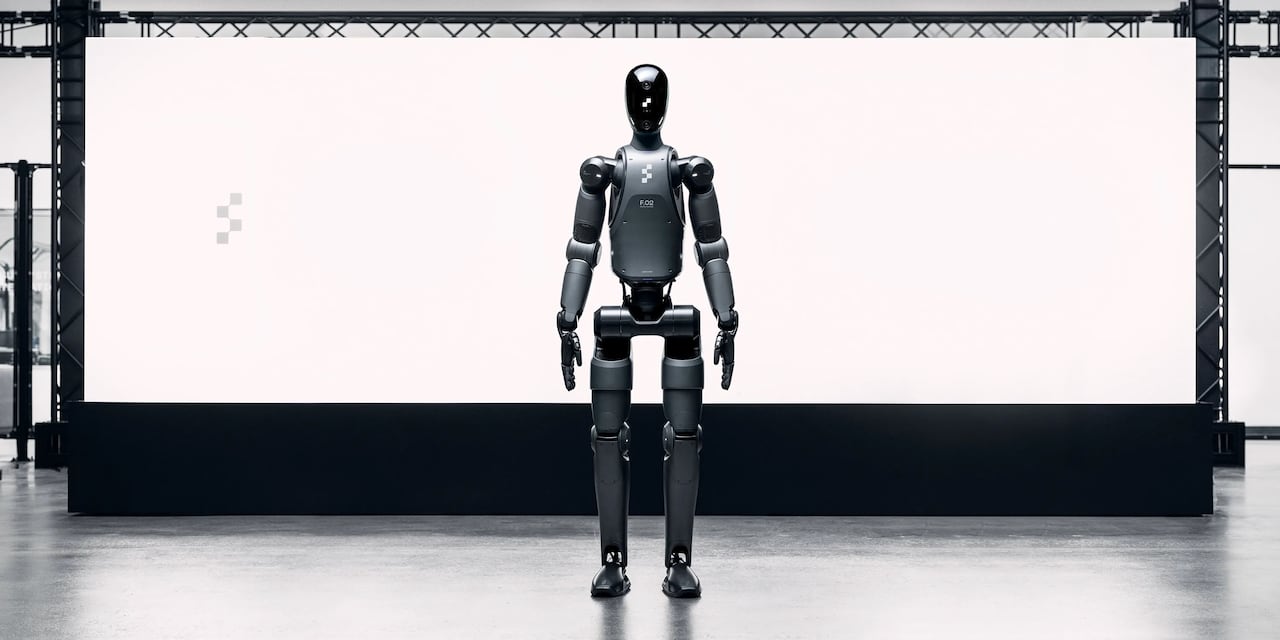Our goal is to deploy autonomous humanoid workers around the world.
An American artificial intelligence (AI) robotics company has announced plans to supply 100,000 humanoid robots to corporations within four years. This move is interpreted as an effort to maintain U.S. technological leadership against China's rapidly expanding influence in the AI and robotics sectors. It draws attention as a surprising announcement from the Donald Trump administration, which is in its second term and has been advocating for a revival of manufacturing.
The American AI robotics startup Figure AI announced on 31st that it has signed a robot production contract with its second commercial partner. Brett Adcock, CEO of Figure AI, revealed through his LINKED that "the company has entered into a contract with its second commercial partner" and added that "this contract is expected to allow for the shipment of 100,000 humanoids."
◇“Humanoids to be supplied to major U.S. corporations”
Figure AI is a startup venture established in Sunnyvale, California, in 2022. Although it is still relatively unknown in South Korea, it began to gain recognition last year when it initiated collaboration with OpenAI for the development of AI-based humanoids. The company is developing humanoid robotic workers called 'Figure' that can perform various tasks in complex environments such as warehouses, factories, and homes.
The company signed its first supply contract with the German automotive corporation BMW last year. The company has not yet disclosed the name and details of the corporation it has contracted with this time. However, CEO Adcock noted that "the new client is one of the largest corporations in the U.S.," leading to speculation that it is likely a manufacturing corporation or logistics company that requires a significant labor force.
As Figure AI signs its second supply contract following that with BMW, expectations are growing for the expansion of humanoid implementation in the fields of manufacturing, logistics, and healthcare in the U.S. CEO Adcock also mentioned on his social media account that "we expect to supply 100,000 humanoids to the two clients over the next four years." Figure AI is also paying attention to the home market outside of industrial sectors, believing that specialized home humanoids for household chores and home healthcare will show significant growth potential.
◇AI humanoids already in a competitive era
The AI-based humanoid robot market has already entered an 'era of fierce competition.' The economic magazine Forbes reported on 25th that 16 corporations worldwide, including Figure AI, American Agility Robotics, Tesla's Optimus, Apptronik, China's Unitree and AjiBot, and Canada's Sanctuary AI, are engaged in intense competition.
In particular, the Chinese government and corporations are posing a threat to the U.S. position. Recently, China has shown a strong commitment to becoming a world leader in the AI-based humanoid robot market. China is pursuing a strategy called 2023 to widely apply humanoid robots across all industries and society by 2027.
Also known as AjiBot, ZhiYuan Robotics announced that it produced 962 humanoid robots for household chores and elderly care by the end of December last year. This is a significantly higher production quantity than Tesla's Optimus, led by the strong competitor Elon Musk.
Chinese corporations have also begun to surpass Western technology in the next-generation technology competition. The Chinese startup MagicLab has released a third-generation humanoid called MagicBot and is competing with Boston Dynamics' Atlas, which is highly regarded.
◇Factory workers and housekeepers to be replaced
Figure AI is developing humanoids in alliance with NVIDIA and Microsoft. It once pursued joint collaboration with OpenAI but has now parted ways. The company is employing a strategy of focus and concentration to rapidly secure a competitive edge in the face of competing technologies, including those from China. Initially, the strategy focuses on growth by concentrating on a few customers instead of as many as possible. CEO Adcock said, "In commercial terms, we need to rely on a small customer base for initial growth."
Figure AI is also adopting a strategy of rapidly developing products. It unveiled its first humanoid prototype, Figure01, just 31 months after the company was established. Figure01 walks at 17% of a human walking speed. The follow-up version, Figure02, has increased its speed by seven times, walking at 1.2 meters per second, or 4.1 kilometers per hour. Figure02 succeeded in performing high-precision sheet metal insertion tasks in a trial conducted at BMW's Spartanburg plant in Germany, where it was deployed in 1,000 locations in one day. The company's third version, Figure03, has completed development and is currently in testing. The company believes that while it is still slower than humans, improvements are forthcoming.
◇If 100,000 units are supplied as planned, a significant advantage awaits
Currently, Figure's technology development appears to be progressing smoothly. CEO Adcock confirmed that "as of late January, the end-to-end neural network successfully operated in the use case of the new client," indicating that technology is being developed smoothly. The end-to-end neural network is a neural network structure that directly maps input data to output results, utilized to train robots rapidly.
Interesting Engineer noted that "if Figure AI successfully supplies 100,000 humanoids as planned, it could emerge as a leader in the global commercial robotics sector" and added that "it would also score a significant advantage in obtaining strong feedback for data collection and design improvements necessary for future follow-up development."
